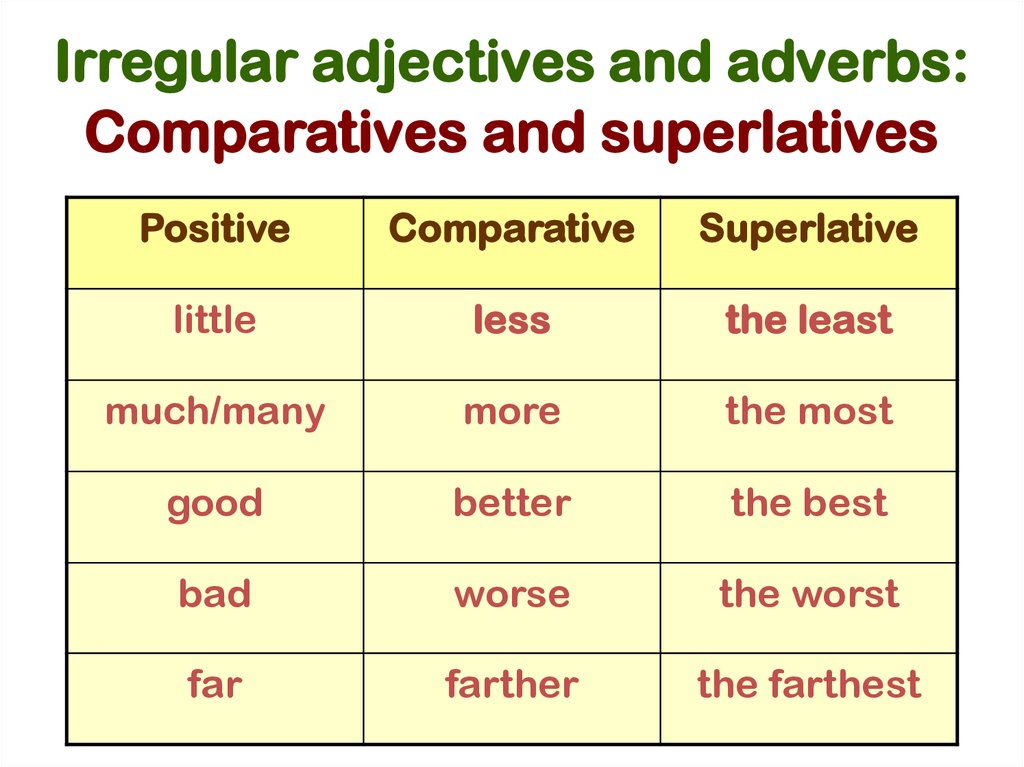TECHNICAL EDUCATIONAL INSTITUTION OF COMMERCE
VIRGINIA GÓMEZ - CIENAGA -
MAGDALENA- 2020
ÁREA DE INGLÉS
GRADE:8°A,B,C
TEACHER: CARMEN ESCOBAR
COMPARATIVES AND SUPERLATIVES
| COMPARATIVES AND SUPERLATIVES |
SHORT ADJECTIVES - COMPARATIVE CONSTRUCTION
Most
one-syllable adjectives and some two-syllable adjectives take the ending
'--er'.
·
young
--> younger
·
tall
--> taller
·
old
--> older
If the
base adjective ends in "--y" we replace the "y" with
"i":
·
heavy
--> heavier
If the base adjective ends in "--e"
we only add an "r":
·
large
--> larger
·
simple
--> simpler
If the
adjective ends with a single vowel +consonant, we double the consonant and add
"--er":
·
big
--> bigger
·
thin
--> thinner
Some very
common adjectives have irregular
comparative forms:
·
good
--> better
·
bad
--> worse
· far --> farther / further
SHORT ADJECTIVES SUPERLATIVE
One-syllable
adjectives (and some common two-syllable adjectives) become superlative by
adding the ending '--est'.
·
young
--> youngest
·
tall
--> tallest
If the
adjective ends in '--y' we replace the 'y' with 'i' :
·
heavy
--> heaviest
·
early
--> earliest
If the
adjective already ends in '--e' we only add '--st' :
·
large
--> largest
·
simple
--> simplest
If the
adjective ends in a single vowel + consonant, we double the consonant and
add"--est":
·
big
--> biggest
·
thin
--> thinnest
Some very
common superlatives have irregular
forms:
·
good --> best
·
bad --> worst
·
far --> farthest
Some
adjectives exist only in superlative form:
·
first
· last
LONG COMPARATIVES AND SUPERLATIVES
Long
comparative : Son aquellos que comparan
dos elementos en los adjetivos formados
por más de dos sílabas se añade a los adjetivos comparativos la
partícula more en posición precedente sin que estos sufran ninguna alteración.
Most adjectives which have two or more
syllables are changed to a comparative form by adding 'more' (for positive
comparisons) or 'less' (for
negative comparisons) in front of the base adjective. The form 'as +
comparative + as' can also be used with longer adjective forms.
LONG ADJECTIVES SUPERLATIVE
CONSTRUCTION
Most
adjectives which have two or more syllables are changed to a superlative form
by adding 'the most' for positive
comparisons and 'the least' for negative
comparisons in front of the base adjective:
Examples:
·
My father
is the least patient man I know.
·
I am the
most intelligent boy in my school.
·
The new
Aston Martin is the most expensive car ever made in Britain.
·
Professor
Stephen Hawking has the most original mind in modern science.
Degree modifiers with
comparatives and superlatives
EXAMPLE:
The tiger is more dangerous than dog
SUPERLATIVE ADJECTIVES expresan el grado máximo de una
característica.
En el caso de
los adjetivos superlativos, se añade the most en posición precedente
sin que éstos sufran ninguna alteración.
EXAMPLE
The tiger is the most dangerous
1- Adjetivos de tres sílabas
o más
Los adjetivos de tres sílabas o más forman el comparativo colocando more antes del adjetivo y el superlativo colocando the most.
GOD BLESS
YOU—DIOS TE BENDIGA
SUCCESS - ÉXITO





